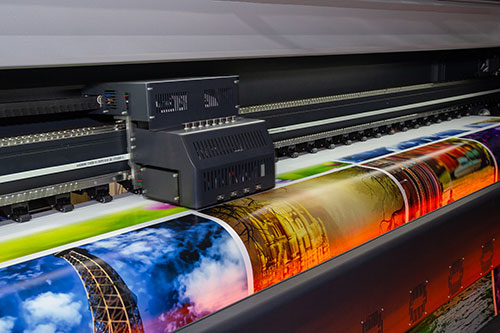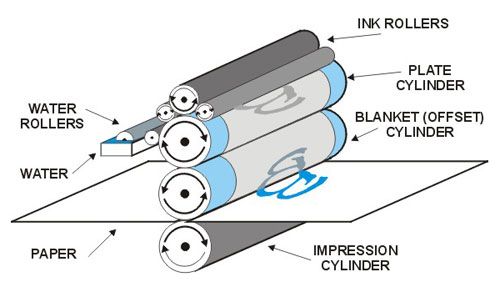Green and Planet-Friendly Options in litho printing
Green and Planet-Friendly Options in litho printing
Blog Article
A Comprehensive Overview to Comprehending Litho Printing Strategies
The world of litho printing, a technique originating from the late 18th century, is a remarkable mix of history, science, technology and art. This detailed guide will certainly unwind the intricacies of this printing technique, from the structure of litho inks to the obstacles encountered in contemporary applications. As we venture right into the complexities of lithography, the importance of automation and sustainability in guaranteeing its future importance becomes progressively clear. Stick with us as we journey right into the exciting realm of litho printing.
The Historical Development of Litho Printing
The historical trajectory of litho printing, a crucial innovation in the world of interaction, is an exciting tale of human resourcefulness. Birthed in the late 18th century by Alois Senefelder, this method was originally an economical method of publishing theatrical works. Lithography, originated from the Greek words for 'stone' and 'to create', made use of a smooth stone surface area to move images onto paper. The procedure developed with the introduction of the rotary press, which significantly raised productivity (litho printing). In the 20th century, the advancement of balanced out lithography changed the market, enabling for mass manufacturing of top notch prints. Each stage of litho printing's development showcases humankind's unrelenting search of efficiency and high quality in visual interaction.
Decoding the Science Behind Litho Printing Inks
Moving onward in the exploration of litho printing methods, the emphasis now changes to the science behind litho printing inks. The composition of these inks, their drying process, and shade mixing techniques create the foundation of this complicated art kind. Comprehending these components is critical to understanding the craft and attaining the wanted print outcomes.
Make-up of Litho Inks
In lithographic printing, the basic duty of litho inks can not be overemphasized. Pigments, the color-providing aspects, are finely ground fragments put on hold in the lorry, a liquid that carries the pigment onto the printing surface area. Each part plays a vital part in the last print's top quality, making the precise formulation of litho inks an elaborate science.
Ink Drying Refine
From the make-up of litho inks, focus turns to the remarkable procedure of ink drying out. The drying out process is important, as it impacts the final print's top quality and long life. 2 primary methods are made use of in litho printing: oxidative drying out and absorption. Oxidative drying includes the ink reacting with oxygen in the air to create a tough, completely dry movie. This method provides a resilient coating, but can be slower compared to absorption. Absorption, on the other hand, involves the ink permeating right into the paper fibers, which is a quicker process yet can cause less vibrant shades. The option between these techniques depends on elements such as print rate needs, the paper kind utilized, and the desired coating.
Color Combining Strategies
While the drying process plays a vital role in litho printing, the scientific research of shade blending methods holds equivalent importance. This is an intricate process that involves the mindful mixing of main colors: cyan, magenta, and yellow, in differing percentages to attain a large range of tones. The enhancement of black ink, recognized as 'essential', aids in controling the strength and deepness of the shades. The scientific research behind litho printing inks also takes into consideration the openness of the ink, which affects how shades overlay and mix. To attain an efficient shade mix, print professionals have to additionally comprehend the details of ink habits, shade theory, and the physical properties of the substratum on which the ink is used.
The Art and Design Components in Litho Printing
Litho printing breathes life into art and layout with its special aspects. Litho printing accommodates a selection of shades, allowing artists to develop dynamic and dynamic prints. This combination of precision and convenience makes litho printing a favored choice for several artists and designers.
Modern Applications of Litho Printing Methods
Litho printing strategies have actually discovered substantial use in the modern-day industrial market. Its impact and importance proceed to expand with the introduction of brand-new technologies and innovations in the area. This section will explore these modern applications and the transformative role they play in the printing market.
Commercial Litho Printing Utilizes
In today's digital age, one might question the importance of conventional printing approaches. Yet, litho printing remains a critical component of the industrial industry. High-volume printing tasks, such as the production of publications, papers, and packaging, More Bonuses depend on litho printing for its capacity to provide superior image top quality and cost performance. The process, which involves transferring a tattooed image from a plate onto a rubber blanket and after that to the printing surface area, offers unequaled consistency. This makes it suitable for jobs needing a large print run. Litho printing additionally provides a broad shade range, above that of electronic printing. This makes it the best choice for projects that demand lively, high-grade color recreation.
Innovations in Litho Printing
Pressing the boundaries of standard strategies, modern improvements have actually sustained a host of developments in litho printing. These developments have not only enhanced the top quality and efficiency of litho prints yet likewise increased its application scope. One popular advancement is electronic litho printing, which combines the merits of electronic innovation with litho's premium output. This crossbreed design provides faster arrangement times, lowered waste, and allows on-demand printing. One more significant advancement is the introduction of ecologically friendly inks. These inks, made from vegetable or soy-based solutions, have significantly minimized the market's ecological influence. litho printing. Furthermore, the growth of sophisticated plate modern technology has structured the printing procedure, causing sharper images and improved shade integrity. These technologies highlight the long-lasting importance of litho printing in the contemporary world.
Checking out the Refine of Litho Printing: Detailed

Obstacles and Solutions in Contemporary Litho Printing

Despite the accuracy and practice that litho printing proudly upholds, it is not without its collection of modern challenges. The most prevalent concerns consist of the high initial configuration price, trouble in printing variable information, and environmental issues because of chemical use. However, solutions are becoming technology progresses. Digital litho printing enables for economical brief runs and very easy modification, addressing the problem of variable data. Environmentally-friendly inks and safer plate-making processes reduce ecological worries. In addition, innovations in automation have actually lowered labor prices, further democratizing the lithography procedure. Hence, while there are obstacles, the litho printing sector is proactively adapting to satisfy them head-on, ensuring its significance in the future.
Final thought
Finally, litho printing, with its rich history and scientific check my reference details, holds a considerable place in the print market. As the guide discloses, it's a synthesis of art and modern technology, with contemporary improvements guaranteeing its relevance. The sector deals with challenges that require cutting-edge remedies, with a focus on automation and sustainability. The future of litho printing hinges on its capability to adjust to these changing demands, affirming its long-lasting worth in a progressing market.

Report this page